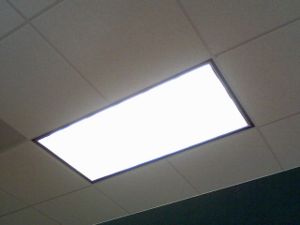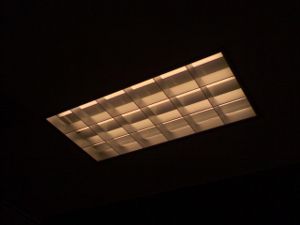Light
Light, on a scientific level, can be defined as electromagnetic radiation produced in the form of a photon, which is produced when an electron returns from an excited, high energy state to its ground state. These photons have very specific properties, such as wavelength and frequency, and those observable properties determine the qualitative properties, such as color and intensity, that are perceived by the eye. This process is how light is commonly produced on the atomic level. There are however other existing methods to generate this radiation.
The observable properties of light are not limited solely to that which is visible by the naked eye. Light is recognized as a form of energy, which can be measured as a part of the range known as the electromagnetic spectrum. The electromagnetic spectrum (EM) is a classification of the different recognized types of radiation that exists in our universe.
Light exhibits behavior that of both waves and particles. Until recently it was deemed impossible to detect both the particle nature and the wave nature of light at the same time, as they were believed to be two representations of the same phenomenon. This has in recent years been improved and the dual nature of light (wave and particle) has now solidly been proven in combined experiments.
The five behaviors of light can generally be classified as either particle or waveform behaviors. The particle-like behavior can be demonstrated photoelectrically and plasmonically, and the waveform-like behaviors include refraction, interference, diffraction, and reflection.
Photoelectricity
In a photoelectric environment, large quantities of photons (which carry a fixed amount of energy) interact with the electron population of a solid. Based on the type of solid, either a reduction or increase in the displacement of electrons can occur. The amount of photons required to displace those electrons has to exceed a certain amount. If electrons are displaced, the extra energy will be transferred to those electrons due to the kinetic energy property of movement. If a greater light intensity exists, more photons will interact with more electrons. If the level of light decreases, there are fewer photons and fewer interactions. Electrons can still continue to be displaced, but this will happen at a lower rate with the same amount of energy. There is a direct correlation between the energy of those photons and the frequency of the light used. It should be noted however, that not all electrons can be displaced.
Refraction
Refraction occurs when the speed of light is reduced at the point of intersection between light and another medium. The angle of refraction is dependant on the effect of change in the speed of light. A larger reduction in the speed of light within the medium will result in a greater angle of refraction. Diamonds, for example, have a much greater index of refraction than water.
Interference
Interference occurs when two or more waveforms of light interact with each other. This phenomenon can be classified into two types: constructive, and destructive.
- Constructive interference is when two or more waveforms come together to form a larger and stronger wave.
- Example: White light is made up of many different waveforms. By projecting the three colors that our eyes have receptors for (red, blue, and green) in a triad, a white light will be seen at the point of intersection. This is the same reason why on LCD screens all colors are required to function to produce white.
- Destructive interference is when two or more waveforms come together to cancel each other out to make a weaker wave.
- Example: On a soap bubble, white light is destructed into different observable color 'bands'. The darker colors represent places where light is destructed.
The determination of constructive or destructive is dependent on the color of the light emitted.
Diffraction
Diffraction is the visual appearance of light changing shape in accordance with obstacles in its direct path. When light is projected to a plane that has only a small opening for light to pass through, the location at which light is allowed to continue can be identified as a single point source of light. This single point does not limit the projection to only the shape of the point; rather it is re-emitted in the widest possible scope.
Reflection
Reflection happens when light is transmitted to a medium, absorbed, and re-emitted with the same amount of energy. Reflection can happen in one of two ways: specular, and scattered. Specular reflection occurs when light is projected onto a smooth surface at a definate angle. Scattered reflection is the reflection of light at various different angles.
Quantum mechanical behavior of light
Light is seen as being quantized, i.e. containing discrete packages of energy as reflected by one particular wavelength emitted. These quantized packages are called photons. Any ray of light contains numerous photons, each has its own energy and therefore wavelength. However, most sources of light will generate photons of various frequencies, an important exception being monochromatic light sources, such as lasers.

